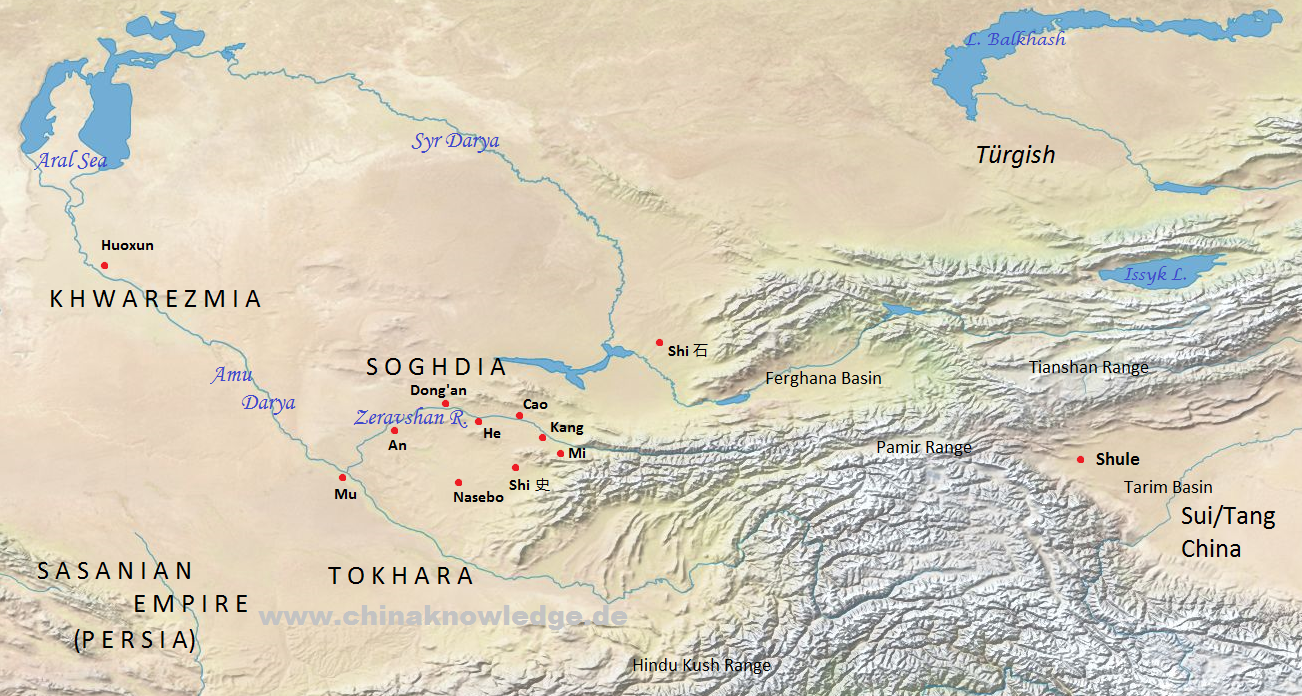The state of Kangguo 康國, also called Xiwanjin 悉萬斤, Samojian 薩末鞬 or 颯秣建, was located in the region Samarkand in modern Uzbekistan, a land formerly known as Soghdia or Soghdiana, in Chinese Sute 粟特, and formerly dominated by a tribe called Kangju 康居. Tradition says that the capital city, Saludi 阿祿迪, was founded by one of the Nine Tribes from Zhaowu (Zhaowu jiuxing 昭武九姓). It was located at the banks of River Sabao 薩寶水. A large part of the population was not sedentary. Kangguo was the most important one among the states in the Soghdiana.
 |
The Soghdia around 600 CE. Based on Tan Qixiang 譚其驤, ed. (1995), Zhongguo lishi ditu ji 中國歷史地圖集, Vol. 5, Sui, Tang, Wudai Shiguo shiqi 隋唐五代十國時期 (Beijing: Zhongguo ditu chubanshe, 1996). |
Chinese sources describe the people of Kangguo as of Indo-European appearance (deep eye-sockets, high noses, "hairy"). They were traders and famous for their musical performances. The reigning family bore the name Wen 溫, and were Tokharians. The prevailing local religions were Buddhism and Zoroastrianism (xianjiao 襖教). The land of Kangguo was fertile and rich, and thus able to export agrarian produce and horses, etc. Dances and music from Kangguo were so popular at the Chinese court that the Music Office introduced the "music of the nine tribes" (jiubu yue 九部樂) and "dances of the ten tribes" (shubu ji 十部伎) as part of the standard modes of performance.
During the Sui period 隋 (581-618), Kangguo sent tributes to the Chinese court. Emperor Gaozong 唐高宗 (r. 649-683) of the Tang dynasty 唐 (618-907) transformed the land into the area command (dudufu 都督府) of Kangju. In the 8th century the region was conquered by Muslim invaders.